One of the best parts about diving deep into an ancient culture is learning all about their daily lives. Yes, the epic stories of great conquerors and royal family dramas can be fantastic in their own right, but there comes a time when even the most ardent history buffs want a little break from the action. During those breaks, the best thing to do is to look into the one subject that everyone loves—food.
One of the fantastic things about food is it can tell you so much about different cultures. For example, you can’t really mistake Japanese culture and Greek culture based on the food they eat. Whether ancient or modern, they undoubtedly have something to share. In this case, it’s all about the ancient Mesopotamians. As one of the oldest civilizations, it’s interesting to peek into their diets and figure out what sustained the average Mesopotamian.
Beer, Beer, and More Beer
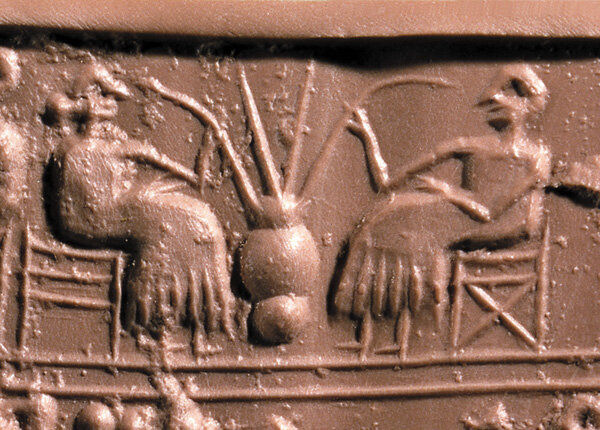
First in line, we have the drink that makes the world go round! Did you know that people have been enjoying beer for thousands upon thousands of years? It’s an extremely old drink, and the reason why the Mesopotamians loved beer was that their number one crop was barley. With barley, you can make an abundance of beer, and the Mesopotamians certainly loved to make beer.
When you look into other civilizations, such as the Greeks, their favored drink was wine. As far as the Egyptians and the Mesopotamians go, it would be beer. They drank more beer than they did fresh water, as the latter wasn’t quite as easy to come by. As a result, you can expect that the Mesopotamians happily drank beer with every meal—which means everything after this includes beer.
Bread from Barley

Next on the list also comes as no surprise, because as stated above, the number one crop of Mesopotamia was barley. They not only made beer with barley, but also bread, which was instrumental in sustaining the average Mesopotamian. Bread is as delicious as it is flexible, as it’s perfectly capable of being used with every meal. In fact, in the Greek peninsula, they would consume bread and wine, and that would be their meal for the most part.
With the ancient Mesopotamians, the diet of the average Mesopotamian was much more varied. While they had bread and beer (and a lot of it), they were much more likely to come up with more varied recipes with their bread. In fact, there exist quite a few ancient examples of Mesopotamian cookbooks, listing all sorts of recipes.
Fish
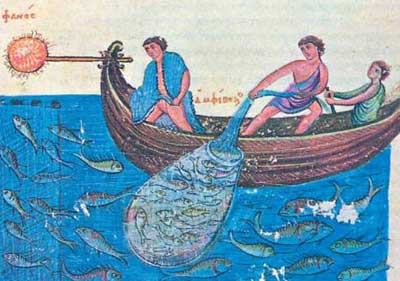
It wouldn’t be easy for any ancient civilization to exist without fish, which is why some of the very first cities sprung close to rivers. As the developers of the first cities, the Mesopotamians were well aware of just how crucial having a body of water next to the city truly was. Some civilizations were luckier than others, however. For example, the ancient Egyptians were lucky in a sense that they had something as vast as the Nile River to help.
The ancient Mesopotamians had the Tigris River, which helped them flourish quite a bit. That said, the rivers were located above the plains, which caused problems with the draining of irrigation. Fortunately, it also meant they had quite a lot of fish to eat! A great portion of the Mesopotamian diet was filled with different types of fish, and they had many recipes about how to prepare them.
Pork

It’s kind of strange how pork is often considered taboo by so many civilizations over the course of human history. There are so many that see them as taboo, and all for a number of reasons. For example, the ancient Egyptians considered pigs as taboo as they associate the pig with Seth, a god known for causing all sorts of trouble with the pantheon. The Mesopotamians certainly ate pig, and made use of its fat as well as its bones. However, past a certain point, pigs became taboo and the Mesopotamians went for other types of meat.
The idea of the pig being unclean also has its roots in the bible, though it’s strange how cultures with entirely different religions saw the pig as taboo. When you consider that without the fat, the meat of the pig is far healthier than most, it’s an odd historical phenomenon.
Various Wild Game
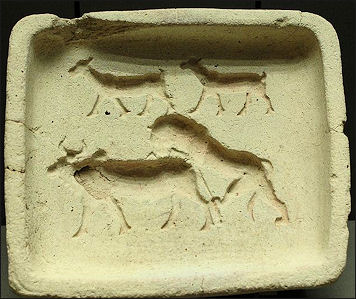
The Mesopotamians certainly loved to hunt, and they were very fond of their wild game. Mesopotamians were known to consume the ghee and the meat of various types of wild game, including gazelles, goats, sheep, ducks, and much more. They were fond of meat in general, though keep in mind that the people of the ancient times weren’t quite as carnivorous as the people of today.
Back in the old days, most people were still getting used to moving out of the hunter-gatherer lifestyle, as the Mesopotamians were the first to make the change and start cities. As a result, the diet consisted mostly of what they could grow, rather than the meat they could catch. They would also give choice cuts as offerings to the gods.
Various Cheeses
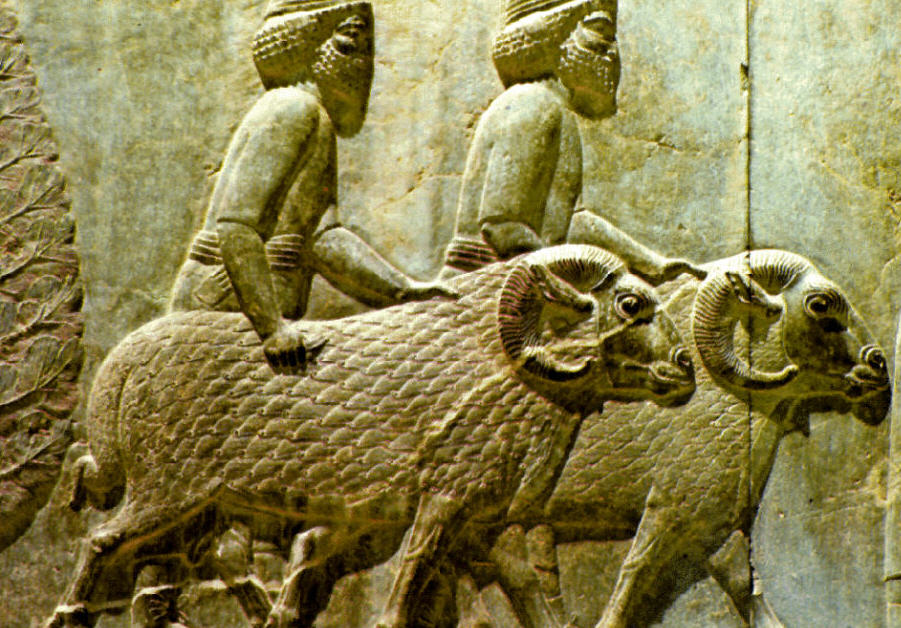
As the Mesopotamians learned to domesticate animals—starting with the goats—they also learned how to take advantage of cultured dairy products. Whether it was milk or cheese, the Mesopotamians used whatever they could to provide food to their families. That said, cheese was one of the most popular food items of the ancient Mesopotamians.
Cheese could be just as varied as bread when it came to recipes, which was why there were so many different ways to prepare cheese. Whether with added spices or different preparation methods, the Mesopotamians were undoubtedly big fans of cheese.
Mesopotamian Gruel/Pottage

The ancient Greeks had a habit of eating a hard type of bread made from barley, similar to the Mesopotamians. They would dip the bread in wine to make it softer, or to add the taste. Archaeologists believed that a form of gruel mixed with lentils, chickpeas and various grains, was the primary food source of the ancient Mesopotamians. They believed that the Mesopotamians would have this type of staple food everyday alongside the other items on this list.
However, recent discoveries have shown that the Mesopotamians were much more varied with their diet than initially speculated. With the discovery of so many different recipes, it’s highly likely that the Mesopotamians ate this gruel/pottage, but not every day. They likely were much more balanced with what they ate, which is more than we can say for most cultures today.
The Cracked Akkadia Cuneiform Recipe Tablet

The discovery of a cracked Akkadia cuneiform tablet showed the modern world that the Mesopotamians had quite a knack at developing new and delicious recipes. To put things into perspective, when this cuneiform tablet was finally deciphered, it consisted of 100 kinds of soup, 300 different types of bread, 20 different cheeses, and so much more. It consists of 800 separate items overall, which was an overwhelming discovery.
It showed that the Mesopotamians weren’t content to eat whatever they could grow or hunt. They wanted to experiment and make various recipes. They want to make sure that they were enjoying what they ate!
The First Sausages

It’s understandable to think that sausages are more of a modern food invention—at least along the lines of hundreds of years. However, did you know that sausages existed well before that? Sausages have been around for thousands of years, and they got their start in Mesopotamia! The Babylonians invented the sausage around 1500 BCE. They did so by adding spice meat into animal intestines, which is a similar recipe used by cultures all around the world.
As far as the name goes, the Romans called it salsus, which sounds rather close to sausage, doesn’t it? Salsus is the origin of the word sausage.
The Oldest Recipes of Mesopotamian Culture
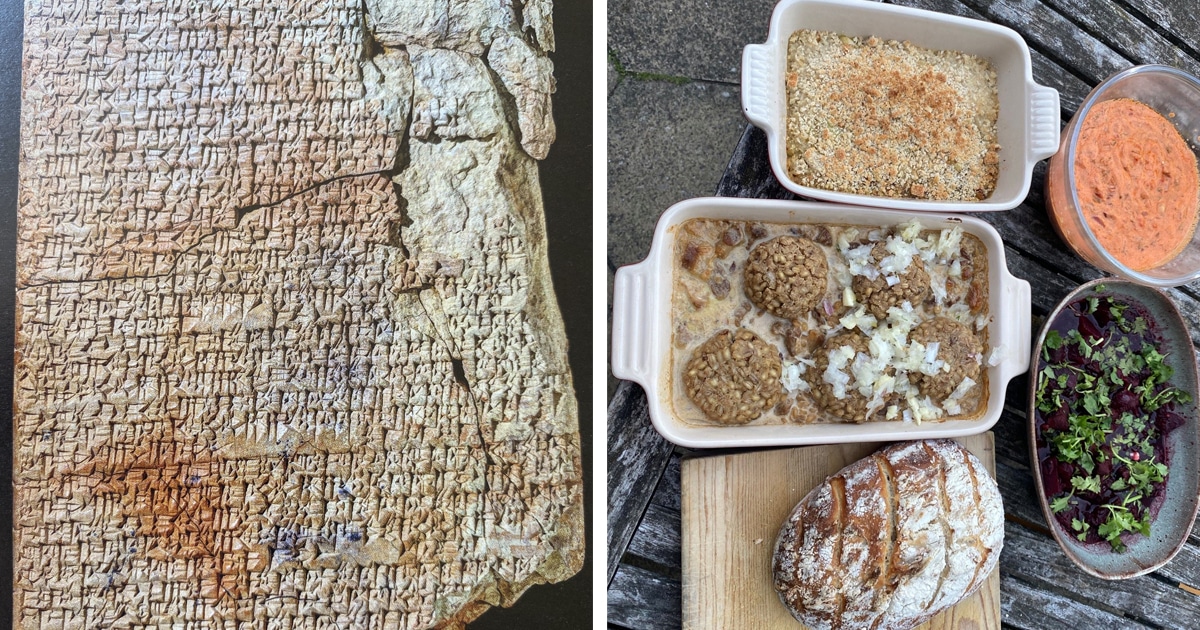
Now that we’ve covered many of the different types of food and drink consumed by the Mesopotamians, what about some of the oldest recipes ever found? Interestingly enough, the oldest recipe in history consists of snake skin, dried plums, and beer to be mixed together before being cooked. That’s kind of an odd one, isn’t it? It’s meant to be sweet, but with the additional texture of the snake skin, it probably creates a really strange flavor profile. That said, for something to be put in a clay tablet, it was probably a relatively popular recipe.
There are quite a few others, such as one of the tablets containing the oldest recipe for beer in the history of mankind. There’s a clay tablet talking about making a stew by mixing young goat (a kid), garlic, onions, as well as sour milk. Another stew involves spleen, mutton, and the addition of pigeon. Rather interesting additions for such an ancient civilization!